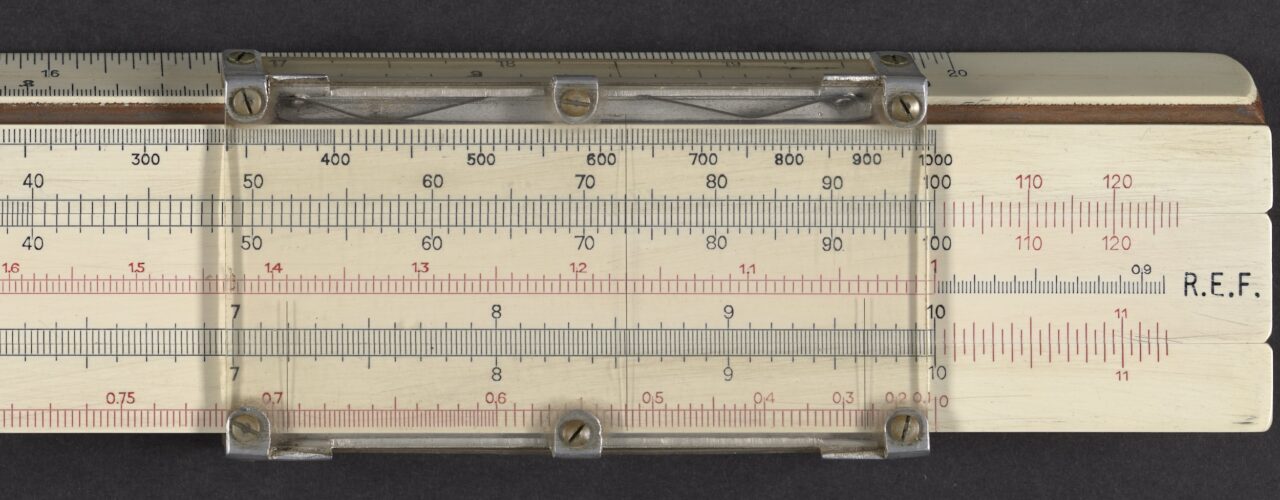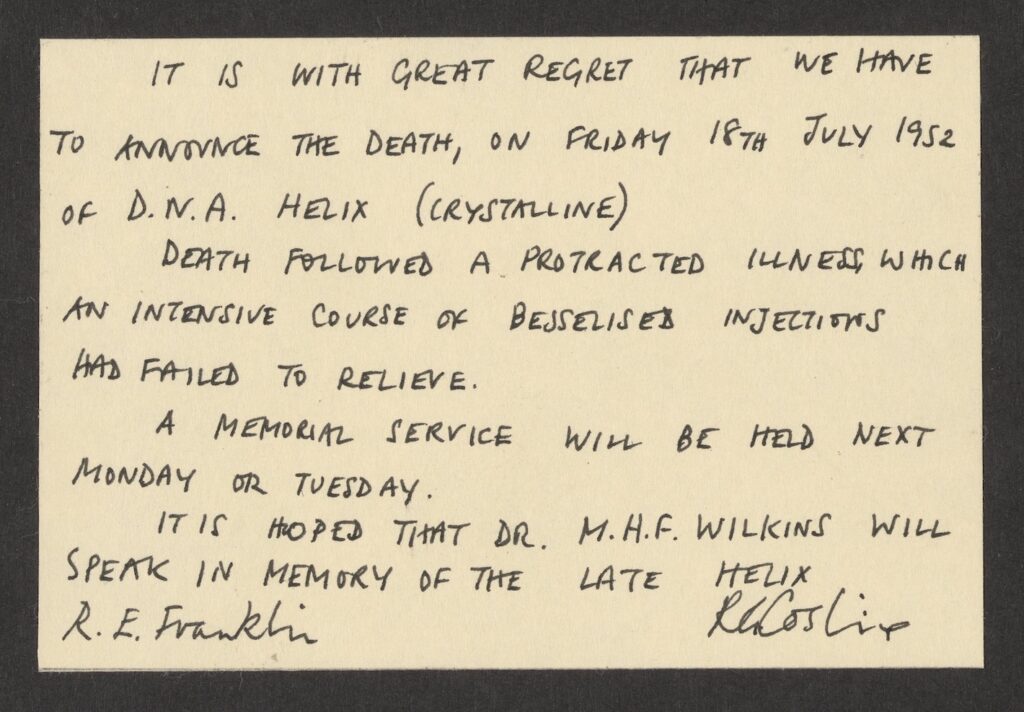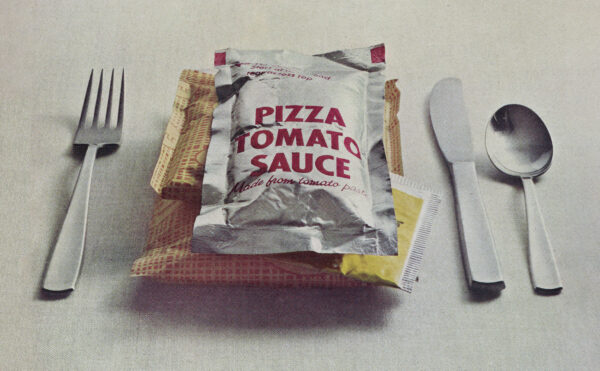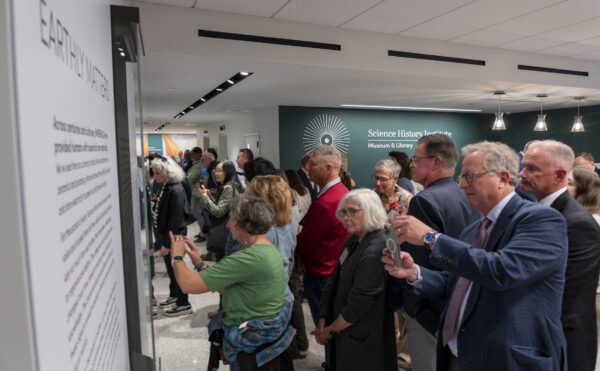
Institute’s History of Molecular Biology Collection Featured in ‘Science,’ ‘Nautilus,’ ‘C&EN’
Press coverage highlights the significance of the recently acquired archive that includes Rosalind Franklin’s famous DNA image known as Photo 51 and her personal slide rule.
The History of Molecular Biology Collection, a renowned archive that was recently acquired by the Science History Institute, was featured in Science magazine, Nautilus magazine, and Chemical & Engineering News (C&EN). Coverage by these outlets highlights the significance of this unparalleled collection that documents the race to identify DNA’s structure and other groundbreaking developments that formed the foundation of molecular biology.
The Science article, titled “After Bizarre Journey, Prized History of Molecular Biology Archive Finds New Home,” follows the life of the collection, from its original assembly by rare book dealer Jeremy Norman and its sale to Craig Venter, to its new permanent home at the Institute, where it has become more broadly accessible. “Now, researchers will be able to easily access key documents . . . to help resolve contentious debates about everything from the relevance of ‘Photo 51’ to the scientific community’s treatment of Franklin,” reads the article.

Nautilus magazine’s “DNA’s Death Notice” story, which was picked up by Yahoo! News, focuses on the treasure trove of materials found in the collection, including a mock funeral invitation marking the death of DNA’s helix structure.
“Science History Institute Library Acquires Original Rosalind Franklin Materials and Other Artifacts” was featured in C&EN, a print and online magazine published by the American Chemical Society. The article talks about how researchers and science historians can access the collection by scheduling an appointment in the Institute’s Othmer Library or applying for a fellowship or travel grant.
About the History of Molecular Biology Collection
Considered one of the most significant scientific archives ever compiled, the History of Molecular Biology Collection includes the papers of such Nobel laureates and celebrated scientists as Aaron Klug, Max Perutz, Francis Crick, James Watson, Maurice Wilkins, Linus Pauling, and Rosalind Franklin, the British chemist whose X-ray crystallography images revealed the double-helix structure of DNA. Taken in 1952 and later known as Photo 51, Franklin’s own copy of the famous image is part of the collection, as are thousands of letters, lab notebooks, research files, handwritten notes, and other rare materials highlighting the social relationships and chronologies of some of the most significant scientific milestones of the 20th century.
As one of the last great scientific pursuits before email and the internet, the History of Molecular Biology Collection reveals collaborations and disputes among scientists at leading research centers, including the Cavendish Laboratory, King’s College London, Birkbeck College, and the California Institute of Technology.
Featured image: 44/54 Darmstadt Logarithmic Slide Rule, Rosalind Franklin’s wooden slide rule with her initials, R.E.F., written on the right side, 1950s.
More News
Melissa Sherman Joins Science History Institute’s Board of Directors
The MOBILion Systems founding CEO will help support the Institute’s mission and strengthen our relationships in the life sciences industry.
Science History Institute Hosts Food Drive to Support Philadelphia’s Old Pine Community Center
Donations of non-perishable items can be dropped off in the Institute’s lobby now through December 19.
Science History Institute Unveils New Mineral Exhibition at Packed Opening Celebration
Ribbon cutting officially opens Earthly Matters and brand-new gift shop, marking the completion of the Institute’s major lobby renovation.



